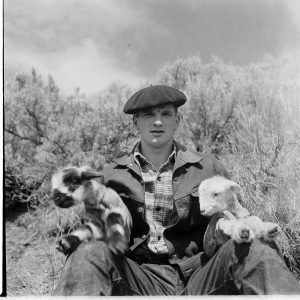Can any reader of FOLK-LORE throw any light on a superstition prevalent apparently among the Basques of Navarre and the Aragonese of the Pyrenees, to the effect that the bear acts as a sort of watch-dog to St. Peter at the gate of Heaven. My informants are two Navarese Basques, a man and woman whom I saw exhibiting a bear in Biarritz. I have no doubt that, if I could have spoken Basque, I could have extracted much more information than I did, but it was difficult for them to speak Spanish, the only language except their own with which they were at all acquainted, and also they were shy and reticent, and it required a good deal of persuasion to win their confidence in the slightest degree. They told me that their bear, when they were not travelling about, lived with them in their hut in the mountains, and that they were always careful to treat him kindly and feed him well. For example, if they had not enough of fish (which they looked upon as a luxury) for themselves and the bear, the latter must be fed and satisfied first. They declared that the animal understands all that is said about him, and observes and comprehends any household work, trade or occupation which may be going on; “and that is the reason that a bear who has lived with men should never be allowed to return to the forest and mountains, for he will tell the other bears of what he has seen and learnt, and they, being very cunning, will come down into the valleys, and by means of their great strength, added to the knowledge they have thus gained, will be able to rule men as they did before!” I endeavoured to learn when this sad state of affairs existed, but could only ascertain that it was antes — before, in other times. “El Orso,” said his keepers, “is el perso de Dios, el perso de San Pedro; he is very wise and thoughtful; he sits beside the blessed saint at the gate of Heaven, and if those who seek to enter have been cruel and unkind to the bears in this world, the saint will turn them away, and they will have to go and live in hell, with the devils and the wolves.” “Que ay mas per deeir!” concluded the woman, “el orso es el perso de Dios.” The bear’s name was Belis; I spell it as it was pronounced. Throughout the conversation the peasants would constantly interrupt themselves to speak to the animal, assuring me that he perfectly understood all that was said.
What is the origin of the custom which prevails in Hyeres, and which I have also seen in Bagneres de Bigorre, of driving two oxen decorated with collars and green wreaths or branches through the town on one or more of the days of Holy Week? The oxen are accompanied by men and boys beating a drum or blowing horns.
TH HOLLINGSWORTH


 Google has just announced that they are hosting an archive of photos that have appeared in Life magazine. In particular, there are about
Google has just announced that they are hosting an archive of photos that have appeared in Life magazine. In particular, there are about 
